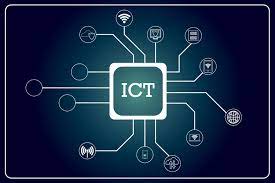ICT in PCB
By:PCBBUY 06/05/2021 17:48

ICT, in the circuit board technology, is an abbreviation for In-Circuit Test. It's also known as the bed-of-nails In-circuit test. Structurally, it is an example of white box testing whereby an electrical probe tests a populated printed circuit board and checks for faultiness such as shorts, opens, etc.
Ideally, you can perform this test with a bed of nails type test fixture or featureless in-circuit test alignment. This type of test method works by checking errors that may occur during fixing components onto the board. In doing so, you can easily replace any defective part. Moreover, they offer a fast and straightforward way of assessing the board’s manufacture and providing accurate results. ICTs can also utilize suction cups to check the soldiers’ sturdiness and the malleable strength of chips.
ICT uses an electrical probe to evaluate how an assembled PCB will function. It uses an electrical current to check that each component is in place and working correctly. It tests for shorts and open circuits and assesses essential electrical qualities like capacitance and resistance.

What are the main types of ICT machines?
There are several different types of ICT machines in the electronics manufacturing industries. The machine type usually is dependent on;
-The manufacturing or testing process
-The volume of purchased PCBs and
-The main types of ICT machines include
Standard ICT machine
In normal circumstances, this is the general test in this form of testing. However, they're standard because they offer elemental resistance, capacitance, and some device functionality.
Manufacturing defect analyzer, MDA
MDA offers an essential ICT of resistance, continuity, and insulation. Manufacturers use it to detect defects such as shorts and open circuit connections on the board. It uses the printed circuit board CAD data to generate the fixture design and test programs while operating. Thus, you can automatically produce about 80% of the programs.
Cableform tester
As the name suggests, you use its operation to test cables optimally. It works similarly to an MDA but differs in high voltage usage. The high voltage is for periodic testing for the insulation.
Flying probe tester
A roving or flying probe has a simple, inexpensive fixture that holds the board. A testing team then connects via a few inquiries that move around the board and make contact as needed. Often, software control monitors the movements of the probes. Therefore, any board updates will lead to a change in the software program.
When choosing a type of ICT machine for your products, consider the following elements common in all ICT testers. They include; controller, software, interface, fixture, analog scanner, powered analog tests, and analog-digital opens. At all times, the mentioned elements steer the operation of ICT.

What are the advantages of ICT?
ICT has some significant advantages that have been the reason manufacturers opt for it for centuries.
They include:
-In contrast to the AOI and flying probe testers, it can test the ball grid array assemblies (BGAs).
-Straightforward interpretation: the ICT system quickly locates the faultiness and presents it to you in a matter of minutes. You may not need professionally skilled personnel to proceed with the interpretation.
-Fast/ Time-effective: it roughly takes 1 minute in comparison to a flying probe tester that may take about 25 minutes. Being short is in regards to contacting all the board’s test points at once.
-Easy program generation: an ICT tester is effortlessly programmed. In that, you can take files from the PCB outline to make the essential program.
-It can test functionality as well as assembly defects as ICT systems can handle complex testing methods.
-Cost-effective: The high speed helps in quick recovering of the expense of setting up the fixture and program. It is especially true when considering boards that you assemble in large volumes.
-ICT platforms: The testing platform for ICT is available in both Windows and UNIX OS, making it universal.
-The testing can carry out several tests without applying power to the Device Under Test (DUT). It ensures a safe test and protects the board from any damage.
-Coverage: For manufacturing defects, it has high failure coverage. A more straightforward explanation for the increased range is the board’s complexity.
Industry Category











